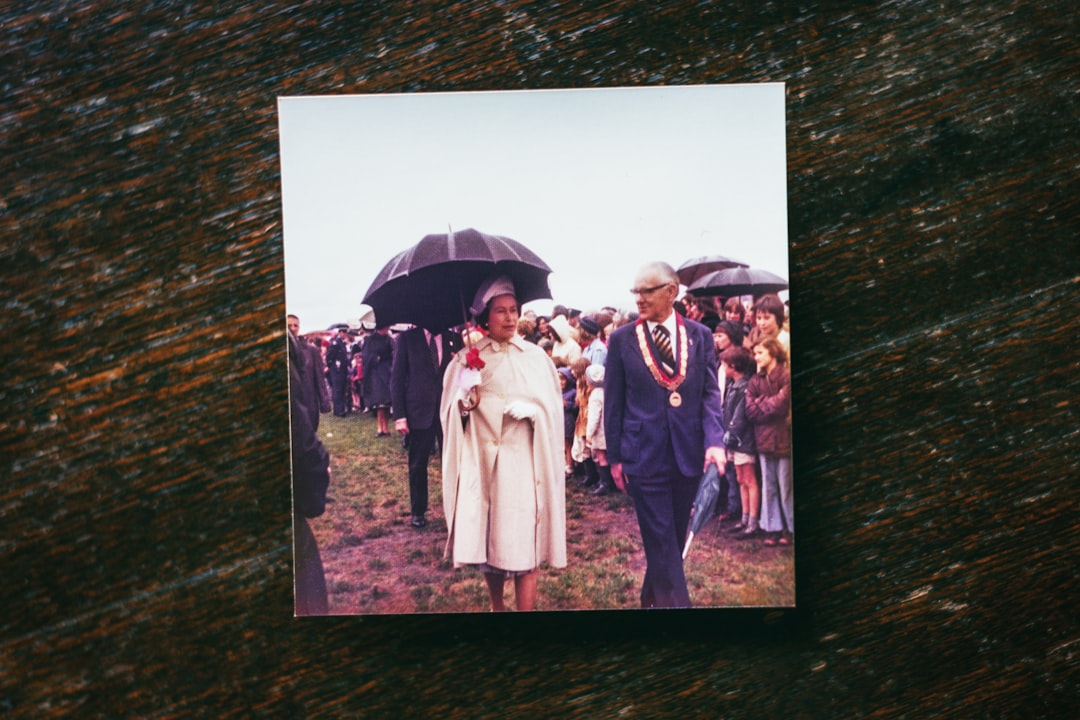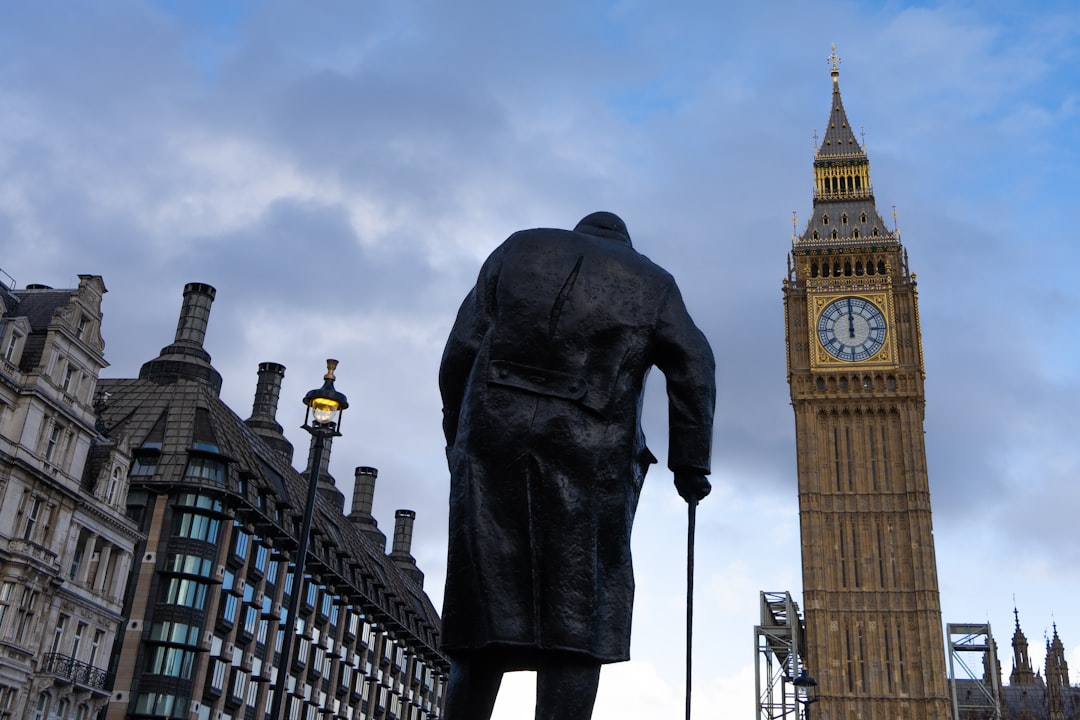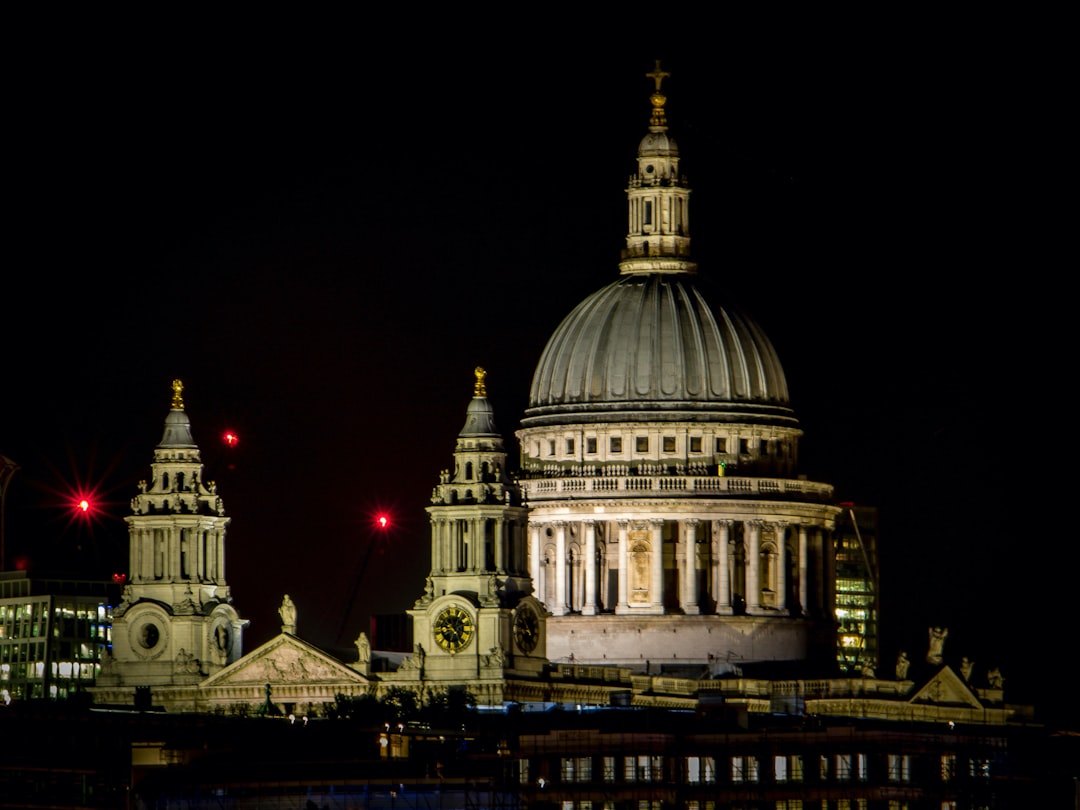Unearthing History: Exploring London’s Famous Final Resting Places
Unearthing History: Exploring London's Famous Final Resting Places - Kings and Queens of England

No tour of London's famous final resting places would be complete without a visit to Westminster Abbey and St George's Chapel at Windsor Castle. These sites hold the tombs and memorials of many of England's most notable monarchs, giving travelers a direct connection to the rich history of the British crown.
Westminster Abbey has been the coronation church for British monarchs since 1066. Within its Gothic stone walls, you'll find the tombs of Queen Elizabeth I and Mary Queen of Scots. Elizabeth reigns as one of England's most influential monarchs, guiding the country through a golden age of prosperity and prestige. Contrast her legacy with that of Mary, who met a tragic end when Elizabeth ordered her cousin's execution after Mary attempted to claim the English throne. Standing before their tombs transports you back to a tumultuous time of religious strife and political intrigue.
Other Westminster burials include Henry III, who rebuilt the Abbey in the 13th century, and Edward I, who expanded the reach of the English empire into Wales and Scotland. The Abbey's royal tombs and memorials chronicle the pageantry, controversies and triumphs of successive reigns.
At Windsor Castle, St George's Chapel entombs ten sovereigns spanning five centuries. Here lie such iconic figures as Henry VIII, founder of the Church of England, and the beheaded Charles I. Modern royals rest here as well, including George VI, the stuttering monarch who led England through World War II, and the Queen Mother Elizabeth. Most recently, St George's became the chosen burial ground of Prince Philip, Queen Elizabeth II's beloved husband of 73 years.
What else is in this post?
- Unearthing History: Exploring London's Famous Final Resting Places - Kings and Queens of England
- Unearthing History: Exploring London's Famous Final Resting Places - Famous Residents of Westminster Abbey
- Unearthing History: Exploring London's Famous Final Resting Places - Literary Legends Rest in Poets' Corner
- Unearthing History: Exploring London's Famous Final Resting Places - Political Giants in St Paul's Cathedral
- Unearthing History: Exploring London's Famous Final Resting Places - Notable Graves at Highgate Cemetery
- Unearthing History: Exploring London's Famous Final Resting Places - Karl Marx's Legacy at Highgate Cemetery
Unearthing History: Exploring London's Famous Final Resting Places - Famous Residents of Westminster Abbey

Beyond British royalty, Westminster Abbey provides the final resting spot for a host of the nation's most influential figures. Names that loom large in British history, literature, science, and the arts have memorials and graves within the soaring Gothic interior.
A moving experience is the Poets' Corner, where England's literary legends are laid to rest or commemorated. Here you'll find the tombs of Geoffrey Chaucer, father of English poetry, as well as Romantic masters like Lord Byron and Percy Shelley. More recent poetic giants buried here include W.H. Auden, known for his technically masterful yet accessible verse that gave voice to existential anxiety in the modern age. Pay your respects at the grave of Dylan Thomas, whose lyricism evoked ecstatic rage against our mortal coil.
The imposing tomb of one of Britain's military heroes, Vice-Admiral Horatio Nelson, also lies in the nave. Nelson secured his fame by defeating Napoleon's fleet at the Battle of Trafalgar in 1805, though the victory cost Nelson his life. The one-armed, one-eyed Nelson exemplified British courage and perseverance against long odds.
Statesmen and scientists also have memorials within the Abbey. Keep your eyes peeled for the tombs of prime ministers like Clement Attlee, who enacted reforms to establish the U.K.'s social welfare system, and William Pitt the Younger, Britain's youngest ever prime minister who led the country during the Napoleonic Wars. The Abbey also honors groundbreaking minds like Sir Isaac Newton, whose insights revolutionized physics and mathematics, and Charles Darwin, whose theory of evolution fundamentally shifted our understanding of life on earth.
Other prominent figures you may encounter include famed actor Laurence Olivier, whose inimitable interpretations of Shakespeare still influence performers today. Pay homage at the grave of composer George Frederick Handel, whose rousing "Messiah" oratorio stirs listeners every Christmas. You can also see memorials to titans of industry like Thomas Telford, the civil engineer whose innovations modernized Britain's roads and infrastructure.
Unearthing History: Exploring London's Famous Final Resting Places - Literary Legends Rest in Poets' Corner

Among Westminster Abbey’s most moving sites is Poets’ Corner, where England’s literary titans lie at rest or are commemorated with stirring memorials. For any traveler passionate about the written word, this hallowed corner provides an unforgettable opportunity to connect with the giants of British literature.
As you explore Poets’ Corner, you’ll find the actual graves of Geoffrey Chaucer, father of English poetry, and Romantic era masters like Lord Byron and Percy Shelley. Tracing your fingers along their engraved names connects you viscerally to these creative spirits who still inspire readers today. More recent poetic greats buried here include W.H. Auden, whose nuanced verse gave voice to the anxiety of the modern condition. Auden’s words feel as relevant now as when he penned them decades ago.
Pay your respects at the tomb of Dylan Thomas, whose lyricism raged ecstatically against our mortal fate. Thomas lived hard and died young after pennance-fueled bouts of drinking, but his work still startles with its technical panache and existential insight. Let his poems echo through your mind as you stand above his final resting place.
While these literary lions lie buried in Poets’ Corner, other authors have memorials here. Admire the intricate stone tablet honoring Jane Austen, whose sly social satires like Pride and Prejudice retain their popularity centuries on. Let your eyes linger on the memorial to the Brontë sisters, whose romantic yet brooding novels still captivate readers today.
You may also encounter memorials to more modern scribes like C.S. Lewis, whose fantasy chronicles transport adults and children alike to magical realms. Pay homage to dystopian author George Orwell, whose harrowing 1984 and Animal Farm capture humanity’s capacity for both progress and depravity.
As you explore these memorials and graves, contemplate how these literary legends redefined the possibilities of language and storytelling. Their works enlighten our understanding of the human condition and enrich our inner lives. Though they lie at rest here, their imaginative feats still spur today’s writers and devotees of great fiction and poetry.
Unearthing History: Exploring London's Famous Final Resting Places - Political Giants in St Paul's Cathedral

St Paul's Cathedral stands as one of London's most iconic landmarks, its majestic dome rising above the city skyline. But beyond its architectural grandeur, St. Paul's is also the final resting place for many of Britain's most influential political leaders. A visit here connects you to titans who defined eras in England's rich history.
Most prominent are the memorials to Arthur Wellesley, the 1st Duke of Wellington, and Horatio Nelson, two of Britain's greatest military heroes. Wellesley secured his fame by vanquishing Napoleon at the Battle of Waterloo in 1815. Gaze up at the mammoth sarcophagus containing Wellesley's remains—a fittingly imposing tribute to a leader of legendary fortitude and tenacity.
Nelson's monument stands equally tall, commemorating his 1805 victory over Napoleon's navy at Trafalgar. Examine the intricacies of Nelson's stone cenotaph, capped with his statue standing proudly atop the coffin. Though the battle cost Nelson his life, his sacrifice ensured England's naval supremacy for a century to follow. Paying respects at these memorials allows travelers to connect viscerally with the courage and sacrifice that shaped British history.
But St. Paul's also honors more recent political giants. Splendid memorials commemorate the legacy of Winston Churchill, Britain's wartime Prime Minister whose rousing oratory fortified England during its "Darkest Hour." Then seek out the simple black stone marking the tomb of Margaret Thatcher, the staunchly conservative Iron Lady whose economic policies redefined Britain in the 1980s.
Thatcher proves a particularly polarizing figure—lauded by some for empowering free enterprise and individualism, while criticized by others for pandering to the wealthy and dismantling social programs. Contemplate Thatcher's complicated legacy as you stand by her unassuming plaque embedded in the cathedral floor—a surprisingly modest monument to such an outsized personality.
For Americans, a moving experience is finding the American Memorial Chapel within the cathedral. Here colorful stained glass and a roll call of stately stone pilasters honor the sacrifices of U.S. forces in World War II. As an American traveler, you may feel a swell of unexpected emotion standing beneath the fluttering Stars and Stripes in this corner of England's national church.
Unearthing History: Exploring London's Famous Final Resting Places - Notable Graves at Highgate Cemetery
Beyond the well-trodden tourist paths, Highgate Cemetery in North London provides an offbeat opportunity to connect with departed icons who shaped England's history and culture. As you meander the twisting paths of this verdant Victorian cemetery, storied headstones emerge like long-lost friends waiting to share their tales.
Literary admirers flock to pay homage at the grave of novelist George Eliot, pen name of Mary Anne Evans. Her humanistic realism in masterpieces like Middlemarch and Silas Marner still awes readers today. Track down the tomb of George Eliot and reflect on her unmatched ability to capture the depths of human psychology and rural provincial life in 19th century England.
Another moving experience is finding the humble gravestone of Karl Marx, whose revolutionary ideas would transform economies and topple governments around the world. Contemplate Marx's complicated legacy as you stand before his unassuming marker. Feel humbled knowing his radical philosophy - as momentous as any scientific revelation or religious doctrine - sprang from the mind of a man now at rest in Highgate's cool earth.
Pop music fans can celebrate the careers of two 1960s icons who shaped the soundtrack of the Swinging Sixties. Ponder the early loss of "Godfather of Punk" Malcolm McLaren, impresario and master manipulator who catapulted the Sex Pistols to infamy. Pay joyful tribute at the candy-pink gravestone of singer Dusty Springfield, whose smoky-eyed soulful pop-blues still touches hearts today.
For cinephiles, a must-see grave is that of director Michael Powell, whose daring partnership with Emeric Pressburger produced film classics like The Red Shoes, Black Narcissus and Stairway to Heaven. Drink in the moving epitaph from Martin Scorsese etched on Powell's marker. Let Powell's supreme artistry inspire your own creative impulses as you wander Highgate's serene avenues.
Some noteworthy memorials commemorate legends from British stage and screen. Toast the career of Sir Ralph Richardson, peerless Shakespearean interpreter and vital member of the mid-20th century Old Vic theatrical dynasty. Stroll by the flamboyant tomb of actor Sir Roger Moore, embodiment of playful British cool as Simon Templar in The Saint and suave superspy James Bond.
Among the titans of science laid to rest here, Sir Joseph Paxton astonishes with his remarkable rise from gardener on a country estate to a star architect whose innovations dazzled Victorian Britain. His crowning feat was the famed Crystal Palace centerpiece of the 1851 Great Exhibition showing off Britain's industrial and colonial might. Stand in awe before Paxton's soaring marble tomb and marvel at his archetypal life story of vision and hard work rewarded.
Unearthing History: Exploring London's Famous Final Resting Places - Karl Marx's Legacy at Highgate Cemetery
Among the storied gravesites dotting Highgate Cemetery rests the monument to one of history's most consequential figures - the influential philosopher and economist Karl Marx. For global citizens seeking deeper connections to past revolutions and current events, paying homage at Marx's humble grave offers profound rewards.
Marx's ideas on class struggle and the evils of capitalism sparked watershed political movements still reverberating today. Standing at his grave, one connects viscerally to the philosopher whose radical thinking toppled governments, reordered economies, and indelibly changed the political map of the 20th century and beyond. Though interred here for over 130 years, Marx somehow feels freshly relevant given recent debates over socialism, wealth gaps, and populist uprisings linked to his ideology.
Laying a red rose atop the grave's weathered stone, I felt awed by Marx's world-shaking accomplishments and humbled by his modest burial place. How astonishing that this ordinary London cemetery held the earthly remains of the man whose ideas revolutionized humanity's relationship to labor, property, social justice, and political authority. What other long-dead thinker could draw reverent visitors daily to place flowers, stones, and notes of solidarity upon their headstone?
Even the most strident critics of Marxism will likely feel stirred standing at the philosopher's tomb. One cannot help but pay grudging respects to the master theoretician who so fundamentally shaped modern political and economic structures, for better or worse. That Marx's doctrines directly or indirectly led to death and suffering on staggering scales only adds to the melancholic profundity of the moment. In the manicured stillness of Highgate Cemetery, the weight and complexity of Marx's legacy sinks in fully.
Given Marx's German birth, my visit held special poignancy coming shortly after the fall of the Berlin Wall in 1989. Watching Eastern Europeans celebrate the collapse of the Soviet system notionally built on Marx's teachings, I gained an inkling of his enormous ideological shadow now starting to diminish. Decades on, how might Marx view his attenuated influence in a world embracing globalism and liberal economics? At his grave, one ponders such hypotheticals while reflecting on Marx's outsized impact on the modern human saga.
